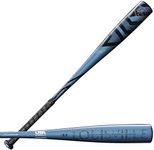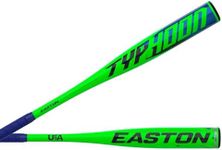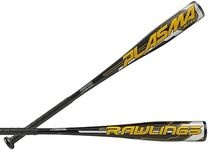We Use CookiesWe use cookies to enhance the security, performance,
functionality and for analytical and promotional activities. By continuing to browse this site you
are agreeing to our privacy policy
Best Youth Baseball Bats
From leading brands and best sellers available on the web.#2
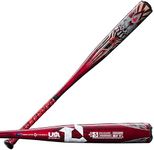
DeMarini
5%OFF
DeMarini Voodoo One Piece (-5) USA Baseball Bat - 31'/26 oz
View Product
#3
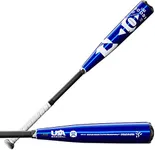
DeMarini
DeMarini The Goods (-10) USA Baseball Bat - 31'/21 oz
View Product
#4
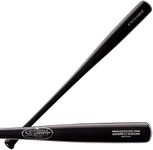
Louisville Slugger
Louisville Slugger Genuine Mix Black Baseball Bat - 32
View Product
#5
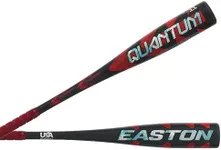
Easton
Easton | Quantum Baseball Ball Bat | USA | -11 | 2 5/8" Barrel | 27"
View Product
#6

Easton
YSB22HAV10 Havoc 28/18 2 1/4-10
View Product
#7
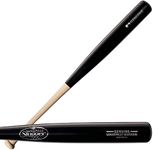
Louisville Slugger
Louisville Slugger Youth Genuine Y125 Natural-Black Baseball Bat - 29
View Product
#8

Easton
Easton | MAV1 Youth Basebal Bat | USSSA | -10 | 2 3/4" Barrel | 26"
View Product
#9
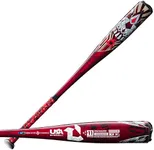
DeMarini
17%OFF
DeMarini Voodoo One Piece (-11) USA Baseball Bat - 31'/20 oz
View Product
#10

Marucci
Marucci CAT7 Silver -10 USSSA Senior League Baseball Bat, 2 3/4" Barrel, 30"/ 20 oz
View Product
Buying Guide for the Best Youth Baseball Bats
Choosing the right youth baseball bat is important for both performance and safety. The right bat can help young players develop good hitting habits, improve their confidence, and enjoy the game more. When picking a bat, it's important to consider the player's age, size, skill level, and league requirements. Understanding the key specifications will help you make a choice that matches the player's needs and abilities.LengthThe length of a youth baseball bat is measured in inches and affects how easily a player can control the bat and make contact with the ball. A longer bat can help reach pitches on the outside of the plate, but it can also be harder to swing quickly. Shorter bats are easier to control and swing faster, which is helpful for younger or smaller players. To pick the right length, consider the player's height and arm length. Most youth bats range from 26 to 32 inches. Players should be able to hold the bat straight out with one hand for a few seconds without struggling, which is a good sign the length is appropriate.
WeightBat weight is usually measured in ounces and is closely related to how fast a player can swing. Heavier bats can generate more power but may be harder to control, especially for younger players. Lighter bats are easier to swing and help with bat speed, which is important for making contact. The right weight depends on the player's strength and hitting style. A good way to test is to have the player swing the bat several times; if it feels too heavy or slows down their swing, a lighter bat may be better.
Drop WeightDrop weight is the difference between the length of the bat (in inches) and its weight (in ounces). For example, a 30-inch bat that weighs 20 ounces has a drop weight of -10. A higher negative number (like -12) means a lighter bat for its length, which is easier to swing. Lower negative numbers (like -8) mean a heavier bat. Younger or less experienced players usually benefit from a higher drop weight (lighter bat), while older or stronger players might prefer a lower drop weight for more power.
Barrel DiameterThe barrel is the thickest part of the bat and its diameter is usually measured in inches. Most youth bats have a barrel diameter of 2 1/4 inches or 2 5/8 inches. A larger barrel offers a bigger sweet spot, making it easier to hit the ball well, but it can also make the bat heavier. League rules often specify the maximum barrel size allowed, so always check those before buying. For most young players, a standard barrel size is a good balance between control and hitting area.
MaterialYouth baseball bats are typically made from aluminum (alloy), composite, or a combination of both. Aluminum bats are durable, require no break-in period, and are often lighter, making them a popular choice for beginners. Composite bats can offer a larger sweet spot and less vibration, but they may need a break-in period and can be more expensive. Hybrid bats combine features of both. The choice of material depends on the player's preference for feel, performance, and sometimes league rules.
League CertificationDifferent youth leagues have specific rules about which bats are allowed, often requiring certain certifications like USA Baseball or USSSA. These certifications ensure the bat meets safety and performance standards. Before buying, check which certification your league requires. Using a bat without the correct certification can result in the bat being disallowed during games.
GripThe grip is the handle covering and affects how comfortable and secure the bat feels in the player's hands. Some grips are cushioned for comfort and to reduce vibration, while others are thinner for a better feel of the bat. Players who are sensitive to vibration or who play in colder weather may prefer a thicker, more cushioned grip. The right grip helps prevent slipping and improves control during swings.

